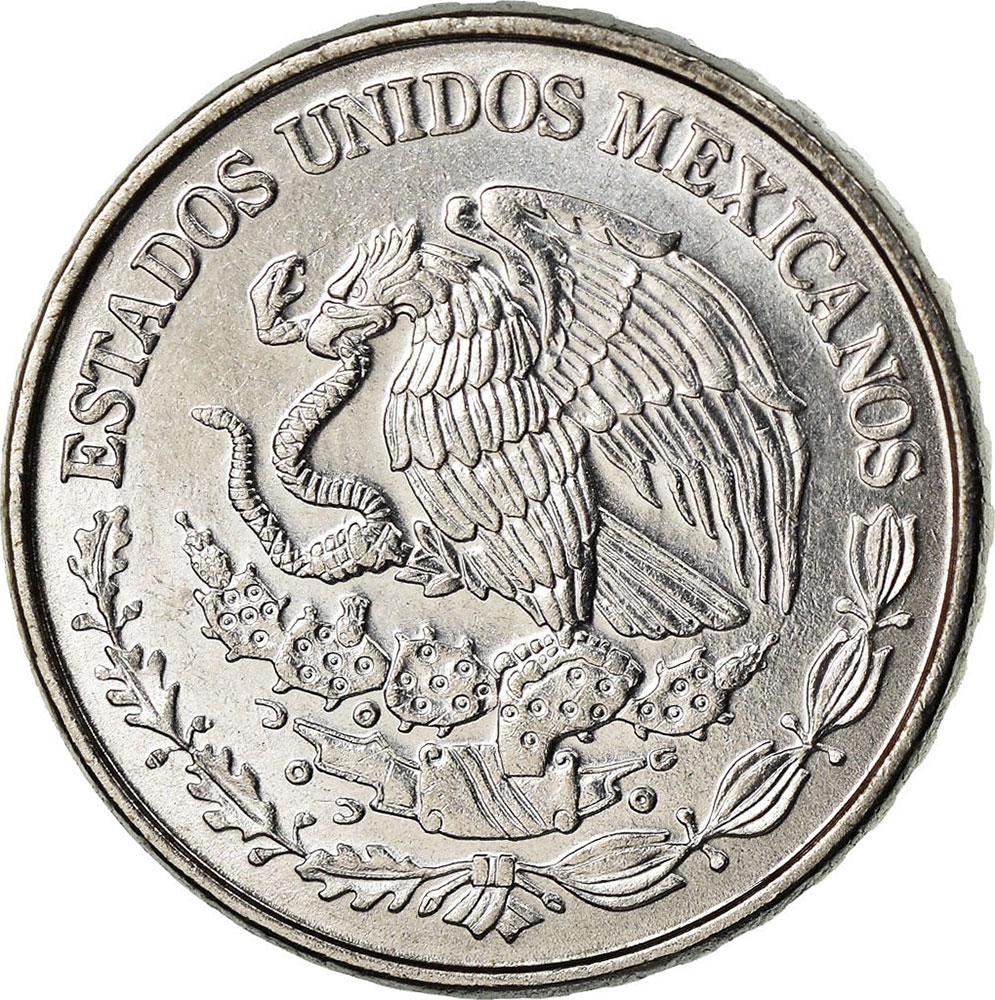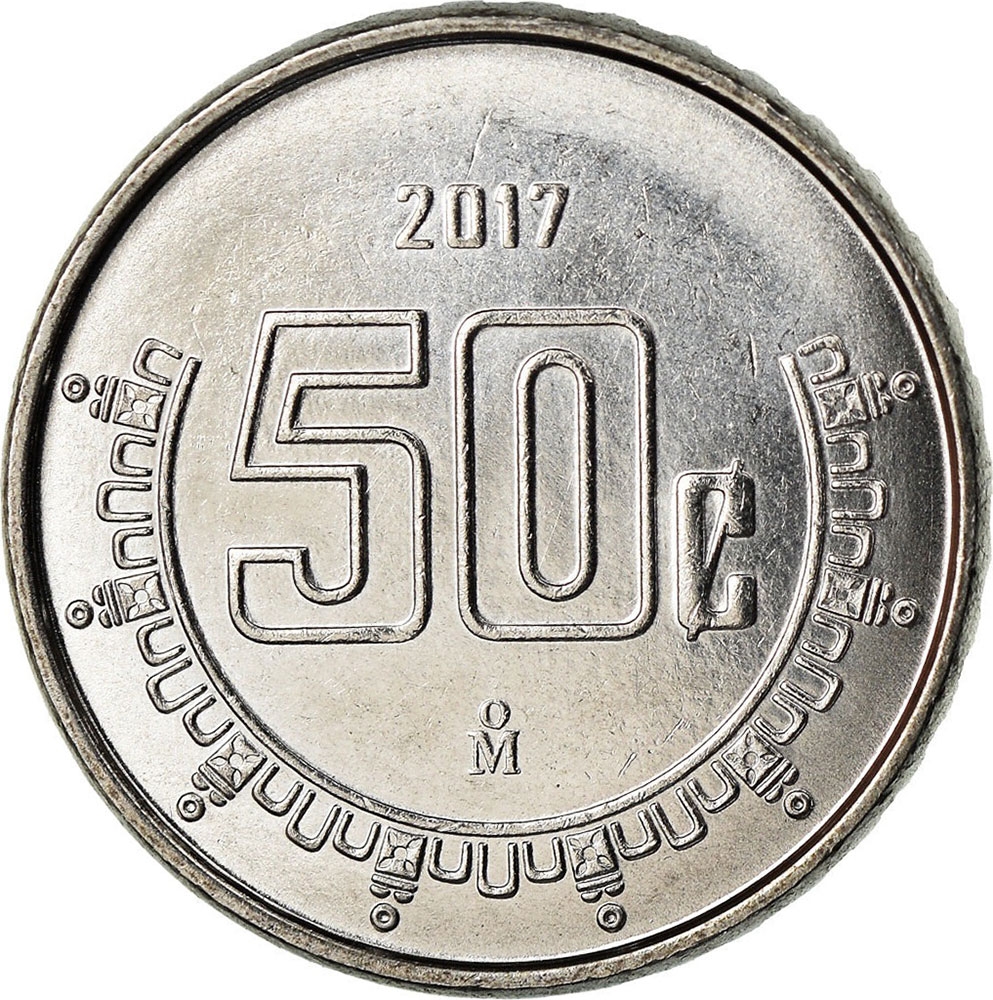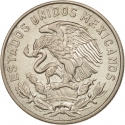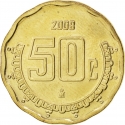You are about to finish your registration. Please check your mailbox (including spam folder). There should be a letter with a confirmation link. Check setting to make sure that your e-mail address is correct.
Send letter againDescription
50 Centavos coins are minted over the punched-out cores of the rings used to make the 5 Peso coins (KM# 605), which was the main reason for the change in size and material (to use the cores instead of remelting them).
Obverse

|
Depicts the seal of the United Mexican States. ESTADOS UNIDOS MEXICANOS |
|---|---|
Reverse

|
Depicts the denomination in the centre with the date above and the mintmark below and a partial border of the stylized designs from the Ring of Acceptance (Anillo de la Aceptación; a representation of the god’s acceptance of sacrifice) on the Aztec calendar stone (Piedra del Sol). 2017 |
| Edge |
50 Centavos
Small Type
KM# 936 Schön# 462
Characteristics
| Material | Stainless Steel |
| Weight | 3.103 g |
| Diameter | 17 mm |
| Thickness | 2.15 mm |
| Shape |
|
| Alignment | Coin |
| Mint |
Mexican Mint (Mo)
|





